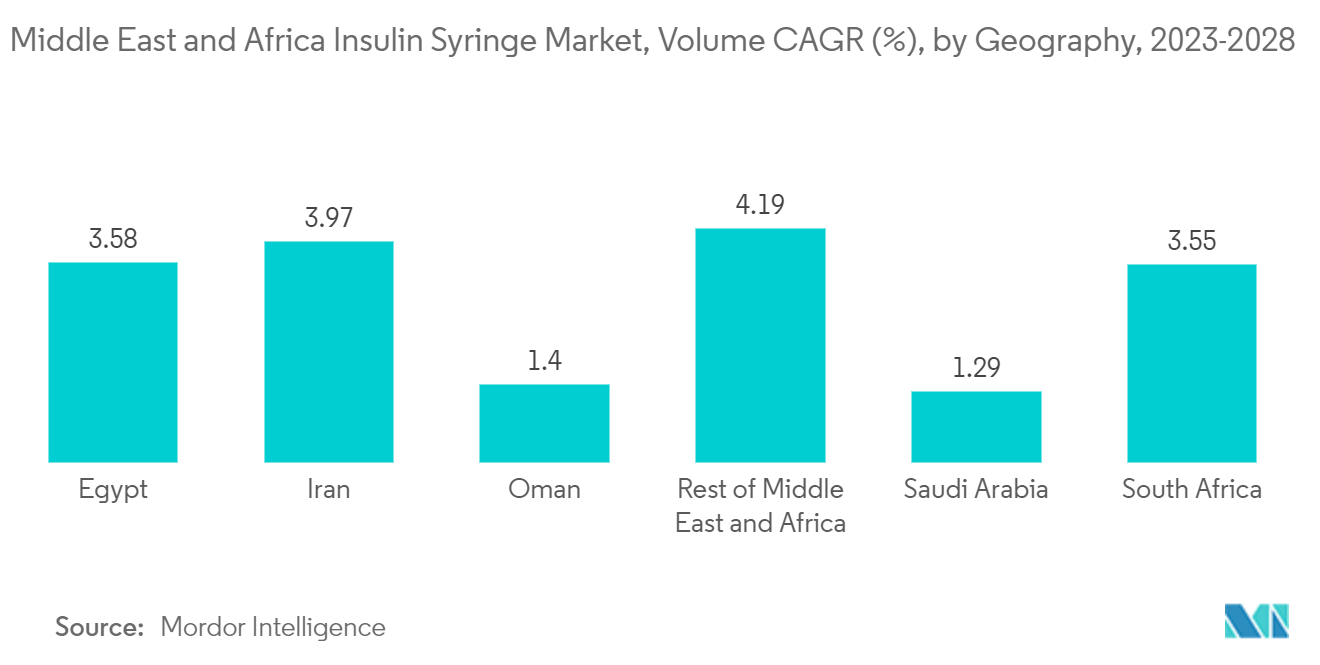Market Trends of Middle East and Africa Insulin Syringe Industry
Rising diabetes prevalence
Owing to the aforementioned factors, the studied market is anticipated to witness growth over the analysis period.
The diabetes population in the Middle East and Africa region is expected to rise by more than 3.5% over the forecast period.
73 million adults lived with diabetes in the IDF MENA region in 2021. This figure is estimated to increase to 95 million by 2030. 48 million adults in the IDF MENA region are living with impaired glucose tolerance, which places them at increased risk of developing type-2 diabetes. Technological advancements have increased over the years in insulin delivery devices for safer and more accurate administration of insulin.
Governments in the ME have identified the threat of diabetes and started to respond with various policies, initiatives, and programs. Six out of 15 countries in this region still do not have a national operational action policy for diabetes. Many countries still do not have a national strategy to reduce overweight, obesity, and physical inactivity, which are important risk factors for diabetes. Most counties have fully implemented national diabetes treatment guidelines. However, constant measures are being taken to minimize diabetic complications; therefore, owing to the aforesaid factors, the growth of the studied market is anticipated in the Middle East and Africa region.

Iran is expected to dominate the Middle East and Africa Insulin Syringe Market over the forecast period
Iran holds the largest share in the insulin syringe market in the Middle East and Africa region in the current year and is expected to register a CAGR of 3.9% over the forecast period.
Diabetes is a serious public health concern in Iran, the Middle East's second-largest country, due to its high prevalence rate, growing occurrence rate, and economic impact. According to IDF 2021, it is estimated that by the year 2030, 9.2 million Iranian individuals are expected to have diabetes. Diabetes has significant economic consequences for the country. Diabetes, in addition to its high direct health care costs, is a significant risk factor for other chronic illnesses such as cardiovascular disease.
The prevalence of diabetes is related to socio-demographic factors, which require attention to the role of these factors in controlling the disease. Diabetes is more common in women, the insured, the low-educated, housewives, and people with a positive family history of the disease, and it increases with age. Although most of the patients are aware of their disease, their blood glucose is not adequately controlled in half of them. Despite the widespread availability of drugs and insulin coverage in Iran, the estimated national control of hyperglycemia, hyperlipidemia, and hypertension remains inadequate.
Pre-diabetes and undiagnosed diabetes are more common among the less educated, older, unemployed, and housewives. Effective strategies are needed for diabetes prevention and control in this population. Design and implementation of patients' registries, international research collaborations in technological advancement, and active follow-up programs can prove helpful in the adoption of diabetes care.
However, the roll-out of new products and increasing awareness about diabetes among people are some of the market opportunities for the players in the market.


